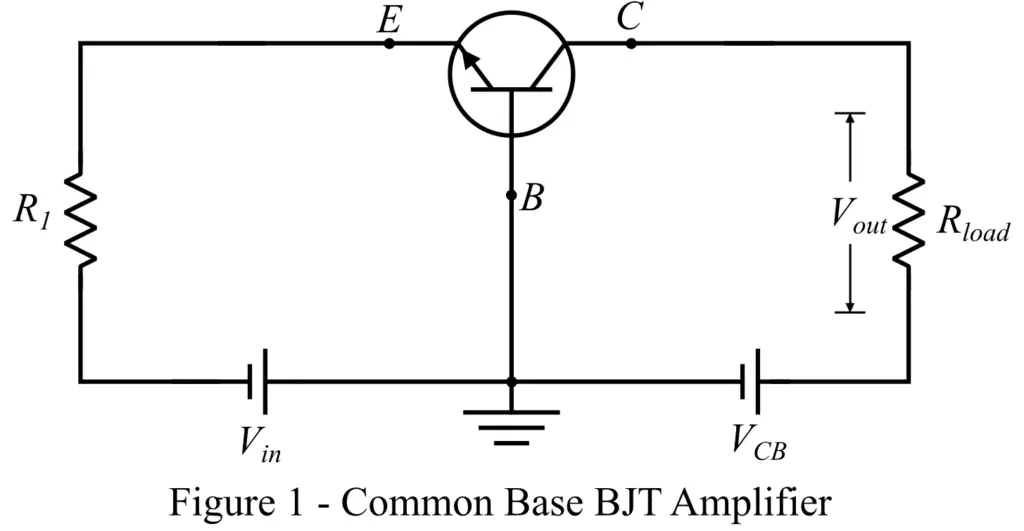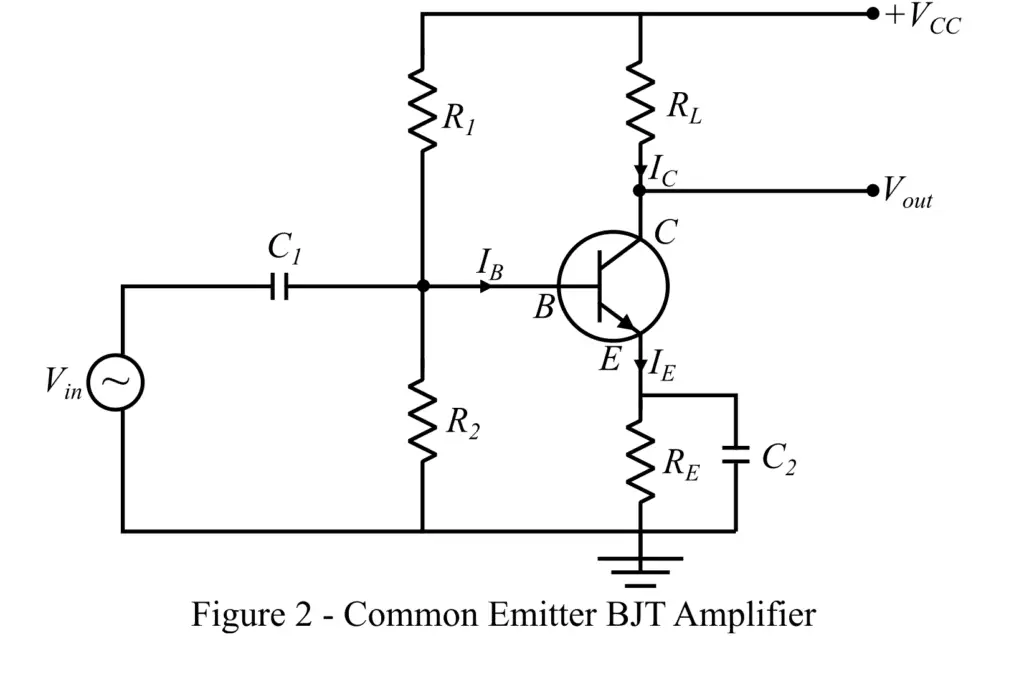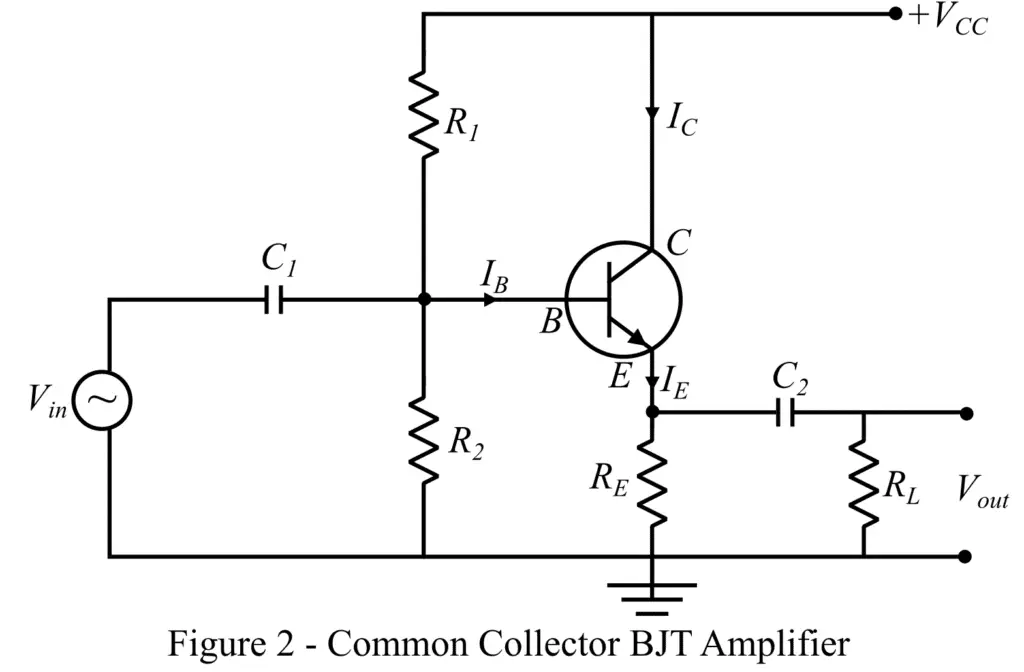In this article, we shall discuss an electronic circuit using a bipolar junction transistor (BJT), which operates as an amplifier, i.e. BJT as an amplifier.
What is Bipolar Junction Transistor?
First of all, let us discuss what is bipolar junction transistors or BJT. A BJT or bipolar junction transistor is a three-terminal two-junction semiconductor device that can operate as a static switch or amplifier depending on the biasing applied to it.
A bipolar junction transistor is constructed by sandwiching a layer of n-type (or p-type) semiconductor between two p-type (or n-type) semiconductor layers. Thus, based on the construction, the bipolar junction transistor can be of two types, namely, NPN Bipolar Junction Transistor and PNP Bipolar Junction Transistor. However, in practical applications, the NPN BJT is most widely used due to its fast-switching speed.
What is BJT Amplifier?
An electronic circuit that consists of a bipolar junction transistor and performs the amplification of signals is called a BJT amplifier.
The BJT amplifier plays a vital role in a number of electronic applications. BJT amplifier is basically a bipolar junction transistor operated in the active region. It increases the strength of the input signal and produces an amplified output. Depending upon the quantity amplified by the circuit, the BJT amplifier could be a voltage, current, or power amplifier.
Types of BJT Amplifiers
Depending upon the configuration of BJT used in the amplifier circuit, they can be of the following three types, namely,
- Common Base (CB) Amplifier
- Common Emitter (CE) Amplifier
- Common Collector (CC) Amplifier
Now, we will discuss all these amplifiers one by one to understand their behavior.
1. Common Base (CB) Amplifier
As the name suggests, the BJT amplifier circuit in which the base terminal is common between both input and output circuits is called a common base (CB) amplifier. The circuit diagram of a common base amplifier is shown in Figure 1.

In this type of BJT amplifier, the input signal is applied at the emitter and the amplified output signal is obtained at the collector terminal. The common-base amplifier does not introduce any phase shift between the input and output, i.e., both input and output signals remain in phase with each other.
The following are some important characteristics of a common base amplifier:
- The common base amplifier has high voltage gain.
- The input impedance of the common base amplifier is low.
- The output impedance of the common base amplifier is high.
- The common base amplifier has a current gain approximately equal to 1.
2. Common Emitter (CE) Amplifier
As the name suggests, a BJT amplifier in which the emitter terminal of a bipolar junction transistor is common to both the input circuit and output circuit is known as a common emitter (CE) amplifier.
In the common emitter amplifier, the input signal is applied at the base terminal, and the output signal is obtained at the collector terminal. Figure 2 shows the circuit diagram of a common emitter BJT amplifier.

The common emitter amplifier receives a weak signal at the base terminal and produces an amplified signal at the collector terminal. However, it introduces a phase difference of 180° between the input and output signals.
The following are the important characteristics of a common emitter amplifier:
- The common emitter amplifier has medium input impedance.
- The output impedance of the common emitter amplifier is also medium.
- It has medium current and voltage gains.
3. Common Collector (CC) Amplifier
The BJT amplifier in which the collector terminal of the bipolar junction transistor is common to both input and output circuits is known as a common-collector (CC) amplifier.
In the common collector amplifier, the input signal is applied at the base terminal, and the output signal is obtained at the emitter terminal. Figure 3 shows the circuit diagram of a common collector BJT amplifier.

The common collector amplifier receives a weak signal through the base terminal and produces an amplified output at the emitter terminal. The most important point to be noted about the common collector amplifier is that it is the BJT amplifier with the lowest output impedance. The common collector amplifier does not introduce any phase shift between the input and output signals.
The following are the important characteristics of the common collector (CC) amplifier:
- It has a high input impedance.
- It has low output impedance.
- It is a high current gain.
- The voltage gain of a common collector amplifier is approximately equal to 1.
Comparison of Different Types of BJT Amplifiers
| Factor | CB Amplifier | CE Amplifier | CC Amplifier |
| Input Impedance | Low | Medium | High |
| Output Impedance | High | Medium | Low |
| Voltage Gain | High | High | Low |
| Current Gain | Low | High | High |
| Power Gain | Medium | High | Low |
Conclusion
In this article, we discussed the BJT amplifier and its different types. Where the amplifier is an electronic circuit that increases the strength of a weak signal. The amplifier which uses BJT as an amplifying element is called a BJT amplifier. It is widely used in various applications like long-distance communication, radio signal amplification, wireless communication, optical fiber communication, and many more.